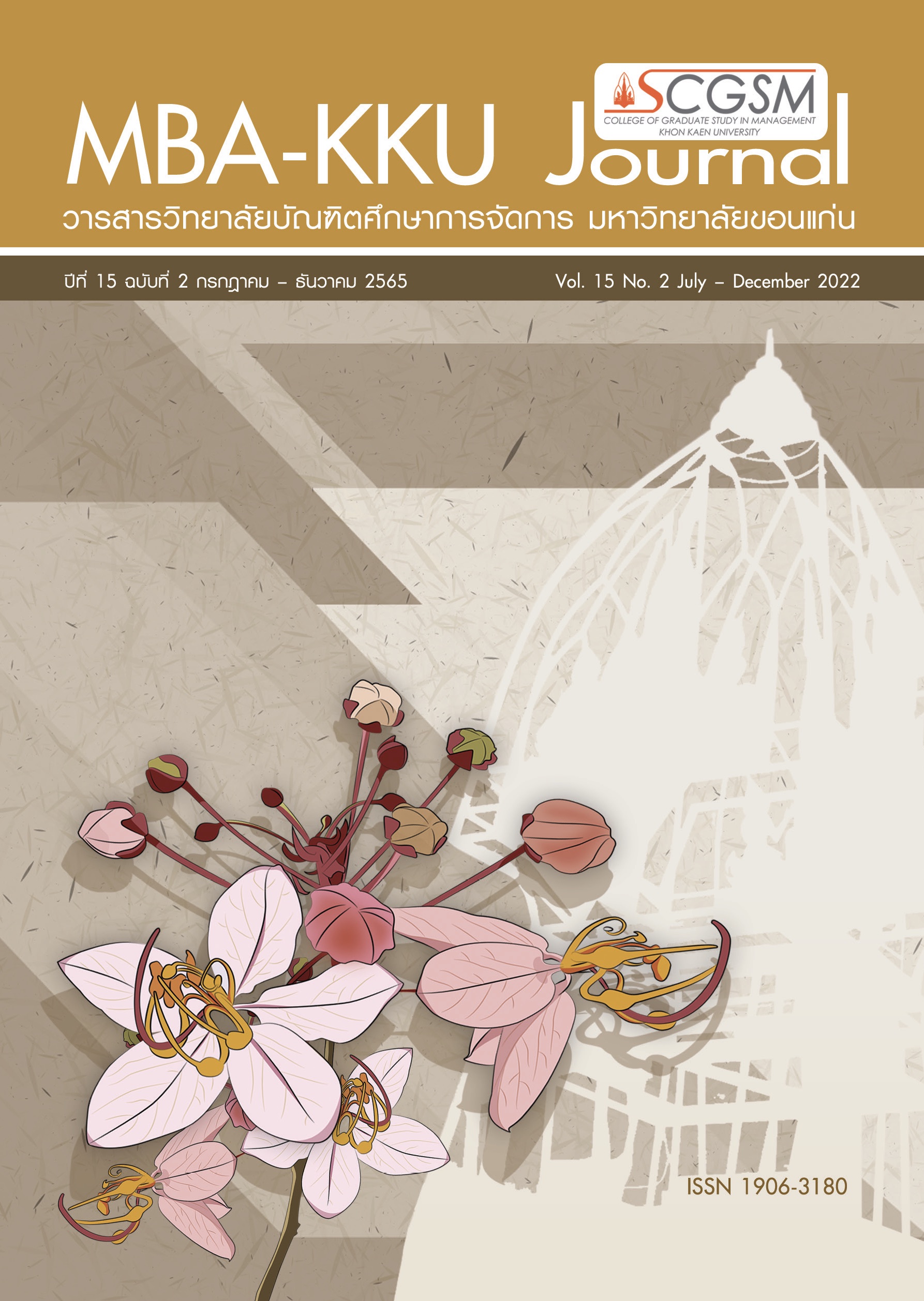A A Study of Consumer Insight on the Need for Power Gel Among Runners in Thailand and New Product Concepts Based on Design Thinking
Main Article Content
Abstract
This independent study has the following objectives: (1) to study in-depth the needs of runners concerning power gel and (2) to design
concepts for power gel products that meet the needs of consumers. Data were collected via interviews with four sample groups of long -distance runners, e.g., full marathon, trail, half-marathon, and mini-marathon. In this study, runners were asked about their need for power gel (Empathy) using open-ended questions. The data were recorded using a customer persona model to understand their insight needs (Define). Next, a product concept was designed (Ideate) and developed into a preliminary model of the product (Prototype). Finally, the product model was tested with sample groups (Test). The opinions obtained from the sample group were used to improve the product concept by using the Value Proposition Canvas (VPC). The results revealed that the sample groups were satisfied with the power gel formula with 50 grams of orange-flavored jelly, a moist liquid texture that is easy to consume, and a refreshing citrus scent. The sample group opinions were used to improve the product concept, with a value proposition canvas serving as the guideline for a new power gel product that meets the
in-depth needs of consumers. Based on the findings, the power gel product that meets the customers’ needs is the one with an orange flavor, moistness, and a jelly-like texture. It should come in a 100ml package with a screw cap making it portable and easy to open.
Article Details

This work is licensed under a Creative Commons Attribution-NonCommercial-NoDerivatives 4.0 International License.
- The ideas and opinions expressed in MBA-KKU Journal are those of the authors and not necessarily those of the editor.
- Copyright on any open access article in a journal published by MBA-KKU Journal
References
ณรงค์กร มโนจันทร์เพ็ญ. (2561). พาวเวอร์เจลคืออะไรทำไมจึงเหมาะที่จะเป็นอาหารมื้อแรกของทีมหมูป่า 13 ชีวิต. เดอะสแตนดาร์ด. ค้นเมื่อ 15 เมษายน 2565, จาก https://thestandard.co/power-gel/
ทรงศักดิ์ รักพ่วง. (2562). การวิ่งมาราธอนในไทย: เครือข่ายทางสังคมและความม้ามายในศตวรรษที่ 21. วารสารร่มพฤกษ์มหาวิทยาลัยเกริก, 37(1), 8-12.
สหรัฐ วิเศษคุณธรรม. (2560). แผนธุรกิจเจลลี่เวย์และเจลลี่ให้พลังงาน. การค้นคว้าอิสระของการศึกษาตามหลักสูตรบริหารธุรกิจมหาบัณฑิต สาขาวิชาวิสาหกิจขนาดกลางและขนาดย่อม มหาวิทยาลัยกรุงเทพ.
อภิญญา จุฑางกูร. (2560). เจลพลังงานและโภชนาการที่สำคัญสำหรับนักกีฬา. วารสารเพื่อผู้บริโภค, 47(4), 40-47
Hasso Platter Institute of Design. (2010). An Introduction to Design Thinking Process Guide. Retrieved May 25, 2022, from https://web.stanford.edu
Jeukendrup, A., E. (2004). Carbohydrate Intake During Exercise and Performance. School of Sport and Exercise Sciences University of Birmingham, 20(7-8), 669–677.
Osterwalder, A., Pigneur, Y., Bernarda, G., & Smith, A. (2014). Value Proposition Design. New Jersey, USA: John Willey & Sons, Inc.
Patterson, D., S., & Gray, C., S. (2007). Carbohydrate-Gel Suplementation and Endurance Performance During
Intermittent Hugh-Intensity Shuttle Running. International Journal of Sport Nutrition and Exercise Metabolism, 17(5), 445-446.
Roberta, C. R., Janine, F. M., Gabriel, V., Cassiana, M. L. C. (2019). Creative Approaches and Green Product
Development: Using Design Thinking to Promote Stakeholders’ Engagement. Sustainable Production and Consumption. Retrieved April 28, 2022, from http://dx.doi:10.1016/j.spc.2019.04.006


